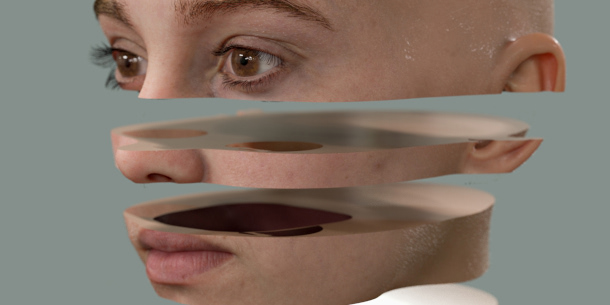Autodesk unveils Arnold 5.4

Arnold 5.4’s new Clip Geo shader in action, in an image rendered by Autodesk in-house artist Lee Griggs.
Autodesk has unveiled Arnold 5.4, the latest version of the VFX-industry-standard production renderer, extending Arnold GPU, adding support for Bifrost for Maya, and a new Clip Geo shader for cutaway images.
The update, which was announced at Siggraph 2019, is due to ship later today.
Initial support for OSL and OpenVDB in Arnold GPU
Arnold 5.4 extends Arnold GPU, the much-anticipated GPU rendering system introduced in Arnold 5.3 earlier this year, and still officially in beta.
The implementation is based on Nvidia’s OptiX ray tracing framework, and supports RTX, the firm’s hardware implementation of the DirectX Raytracing API, available in its current-gen RTX graphics cards.
The latest update fills in many of the major features missing from Arnold GPU in the 5.3 release, including Open Shading Languge, OpenVDB volumetrics, random walk subsurface scattering, and light portals.
Autodesk’s blog notes that there are “some limitations to OSL and OpenVDB support”. At the time of posting, the online list of features supported in Arnold GPU hadn’t been updated, but details should appear there.
Support for Bifrost for Maya, plus a new Clip Geo shader for rendering cutaways
Other new features in Arnold 5.4 include support for Bifrost for Maya, the new visual progamming environment for physics simulations introduced in Maya 2019.2 and available as a plugin for Maya 2018.0+.
The toolset adds new combustion and aerodynamics solvers for fire and smoke, and a new Material Point Method (MPM) solver for granular fluids like snow and sand, cloth, and fine strands like hair and grass.
Arnold supports all of the Bifrost geometry types, including volumes, strands and instances.
The update also adds a Clip Geo shader for generating clipping planes when rendering cutaway images for product or architectural visualisations – or for more surreal effects like the image at the top of the story.
There are also further improvements to the renderer’s adaptive sampling and progressive sampling systems, and enhanced support for Alembic and MaterialX.
System requirements and availability
Arnold 5.4 is available for Windows 7+, RHEL/CentOS 6+ Linux and Mac OS X 10.9+. Integration plugins are available for 3ds Max, Cinema 4D, Houdini, Katana and Maya, plus a legacy plugin for Softimage.
The software is rental-only, with subscriptions now starting at $65/month or $630/year. The plugins are free.
Arnold GPU is supported on Windows and Linux only, and requires a compatible Nvidia GPU.
Read an overview of the new features in Arnold 5.4 and Arnold GPU on Autodesk’s product website
Read a full list of new features in Arnold in the online documentation
